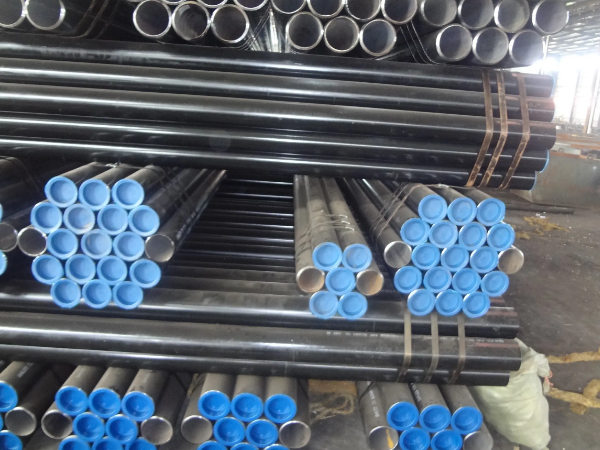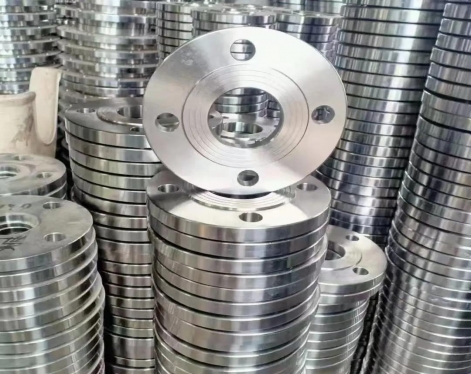In the production process of cold drawn seamless tubing, there are work hardening and hydrogen embrittlement, which are the main reasons for the cracking of cold drawn seamless tubing.
Analysis of bursting phenomenon cold drawn seamless tubing is formed by reducing the diameter of a fine-drawn pipe with a smaller diameter through a drawing die. The process route is generally annealing, pickling and drawing. In the process of drawing, the cold drawn seamless tubing sometimes cracks like a bamboo pole from the beginning to the end. We call this phenomenon cracking.
The reasons that affect the cracking are: work hardening; hydrogen embrittlement
Work hardening
A large amount of plastic deformation occurs in the steel pipe during cold drawing, which causes obvious lattice distortion, which increases the lattice energy and the internal energy of the metal, resulting in uneven internal stress of the metal and residual internal stress. In this way, the hardness of the metal increases and the toughness decreases. The higher the hardness of the metal, the greater the residual internal stress during cold drawing, and the more obvious the work hardening phenomenon. When the residual stress reaches a certain value, the metal will tear along the grain interface of a certain column, forming the cracking of the steel pipe.
Prevention: control the diameter reduction of the air-drawing pass and the number of continuous drawing times to ensure the heat treatment and the quality of the hammer head; the steel pipe after drawing should be annealed in time.

Hydrogen embrittlement
In the process of descaling with acid solution, sulfuric acid and iron react to release hydrogen. Hydrogen penetrates into the steel in the form of atoms or ions, forming a solid solution. The influence of hydrogen on the mechanical properties of steel is typically manifested in the phenomenon of hydrogen embrittlement.
Precaution:
1) Cathode electrolytic degreasing must be strictly controlled before electro-galvanizing. For elastic fasteners (especially thickness ≤1mm), it is not suitable to use cathodic electrolysis to remove oil, but to use anode electrolysis to remove oil, chemical oil removal or ultrasonic oil removal, or metal cleaning agent to remove oil (better effect).
2) It is not appropriate to use strong acid corrosion on elastic fasteners, but to use sandblasting or shot peening to achieve the purpose of purifying and activating the surface. When pickling and activation treatment must be carried out, it is better to use hydrochloric acid than sulfuric acid. Note that the pickling time should not be too long (control 30-60s each time), and multiple short periods of time are better than long periods of pickling.
3) The galvanizing electrolyte with less hydrogen embrittlement should be selected. Generally speaking, the chloride type galvanizing electrolyte has less hydrogen evolution, and the possibility of hydrogen embrittlement is small; while the cyanide galvanizing electrolyte has hydrogen evolution and hydrogen permeation. More, the probability of hydrogen embrittlement is also greater.
4) Use an effective hydrogen drive process to disperse hydrogen permeation and reduce hydrogen embrittlement stress. The hydrogen driving temperature is generally 190-230 °C, and the hydrogen driving time is 6-8h. It should be carried out within 2 hours before passivation after electrogalvanizing, and the shorter the residence time, the better.
Analysis of bursting phenomenon cold drawn seamless tubing is formed by reducing the diameter of a fine-drawn pipe with a smaller diameter through a drawing die. The process route is generally annealing, pickling and drawing. In the process of drawing, the cold drawn seamless tubing sometimes cracks like a bamboo pole from the beginning to the end. We call this phenomenon cracking.
The reasons that affect the cracking are: work hardening; hydrogen embrittlement
Work hardening
A large amount of plastic deformation occurs in the steel pipe during cold drawing, which causes obvious lattice distortion, which increases the lattice energy and the internal energy of the metal, resulting in uneven internal stress of the metal and residual internal stress. In this way, the hardness of the metal increases and the toughness decreases. The higher the hardness of the metal, the greater the residual internal stress during cold drawing, and the more obvious the work hardening phenomenon. When the residual stress reaches a certain value, the metal will tear along the grain interface of a certain column, forming the cracking of the steel pipe.
Prevention: control the diameter reduction of the air-drawing pass and the number of continuous drawing times to ensure the heat treatment and the quality of the hammer head; the steel pipe after drawing should be annealed in time.

Hydrogen embrittlement
In the process of descaling with acid solution, sulfuric acid and iron react to release hydrogen. Hydrogen penetrates into the steel in the form of atoms or ions, forming a solid solution. The influence of hydrogen on the mechanical properties of steel is typically manifested in the phenomenon of hydrogen embrittlement.
Precaution:
1) Cathode electrolytic degreasing must be strictly controlled before electro-galvanizing. For elastic fasteners (especially thickness ≤1mm), it is not suitable to use cathodic electrolysis to remove oil, but to use anode electrolysis to remove oil, chemical oil removal or ultrasonic oil removal, or metal cleaning agent to remove oil (better effect).
2) It is not appropriate to use strong acid corrosion on elastic fasteners, but to use sandblasting or shot peening to achieve the purpose of purifying and activating the surface. When pickling and activation treatment must be carried out, it is better to use hydrochloric acid than sulfuric acid. Note that the pickling time should not be too long (control 30-60s each time), and multiple short periods of time are better than long periods of pickling.
3) The galvanizing electrolyte with less hydrogen embrittlement should be selected. Generally speaking, the chloride type galvanizing electrolyte has less hydrogen evolution, and the possibility of hydrogen embrittlement is small; while the cyanide galvanizing electrolyte has hydrogen evolution and hydrogen permeation. More, the probability of hydrogen embrittlement is also greater.
4) Use an effective hydrogen drive process to disperse hydrogen permeation and reduce hydrogen embrittlement stress. The hydrogen driving temperature is generally 190-230 °C, and the hydrogen driving time is 6-8h. It should be carried out within 2 hours before passivation after electrogalvanizing, and the shorter the residence time, the better.









